Celebrate Spring with a Cup of White Tea!

Our Definitive Guide to White Tea
As we relish the arrival of spring, the longer sunnier days and the powerful opening of leaf buds and blossoms, our taste buds are equally urging for some light, floral and refreshing food and drink.
Spring is a time for clean and invigorating flavours with a hint of sunny sweetness, but also health, detoxifying and wellness. These are just a few of the reasons why we love the rarest and most prized of all teas – white tea!
What is White Tea?
White tea has traditionally been grown and produced almost exclusively in China, namely in the Fujian and Yunnan regions. However, more recently, white tea is also being produced in other parts of the world like India and Africa.
White Tea is the least processed of all the teas and is picked in spring with only the youngest leaves and silvery buds making up the harvest. To create the distinctively sweet, dewy flavour, the leaves are picked by hand then gently laid out to wither and dry under the warmth of natural sunlight. This simplicity, however, takes great skill and subtlety from the tea master to create a truly balanced and nuanced tea.
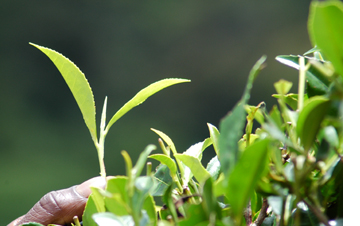
White Tea – Potted History
It’s tricky to really know when precisely white tea was first picked, produced and drunk, but as a general rule, it was believed that it originated during the Song Dynasty (960 – 1269 AD) in Imperial China, yet even earlier accounts of its consumption have surfaced from the Tang Dynasty (918 – 907).
Regardless of the provenance of white tea, history suggests that royalty and emperors only drank white tea as a ceremonial fine tea. Just the bud and first two leaves were carefully picked to make these ‘tribute’ teas symbolising honour and respect.
Types of White Tea
Silver Yunnan is our organic white loose-leaf tea grown in the famous Chinese province of Yunnan. It is harvested in spring and is one of the rarer white teas. Our Silver Yunnan has strikingly large, bright and silvery leaves and because only two leaves and one bud are selected, it develops a deep flavour with a soft, fruity and flowery finish.
Our Pai Mu Tan is also known as White Peony which is probably one of the most recognised white teas in the world. Traditionally from the Fujian region in China, the award-winning organic loose-leaf white tea is an exceptional example of high quality. In appearance, when dry, is that of little silver blossoms resembling peonies. Pai Mu Tan has a sweet aroma with a freshness and light spice, offering a bright golden-coloured cup.
For the production of White Silver Needle tea only the most beautiful, aromatic buds of the Pai Hao tea plant are picked. This tea does not become bitter; hence the leaves do not necessarily need to be strained. To produce 1 kg of Silver Needle white tea around 30,000 fresh unopened buds are required. Our Silver Needle organic white tea is produced using only lustrous, silvery buds (unopened leaf shoots) that are covered in white downy fuzz. It has a subtle, mildly sweet flavour.
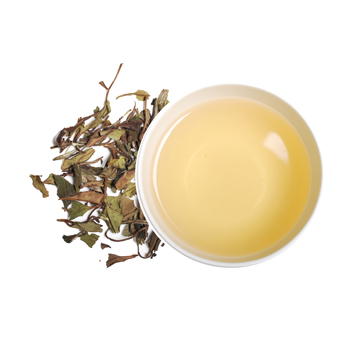
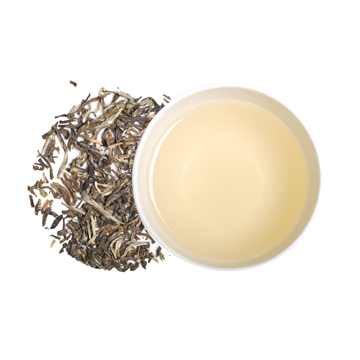
Is White Tea Really White?
White tea isn’t really white in colour at all. It has a subtle creamy yellow tone when brewed. We believe that ‘white’ actually refers to the fine silvery-white ‘fluff’ found mostly on the underside of the tea plant’s youngest buds.
The Character of White Tea
White tea is light, delicate and subtle and is the perfect introduction to the world of fine Chinese teas. It has a sweet, almost honeyed taste and aroma that is subtly fresh and enticing. White tea has other nuances too, such as grassy, floral, fruity or herby which are attributed to how and when the leaves were picked. Our organic award-winning loose leaf Pai Mu Tan, also known as White Peony, is of the highest quality and has a sweet aroma of freshness and light spice with a bright, golden-yellow cup. Our customers love it; just read our reviews! Another, perhaps rarer white tea, is our organic loose-leaf Silver Yunnan which is only harvested in spring and has strikingly large, bright and silvery needle-like leaves. Picked with just two leaves and the bud it develops a full flavoured taste with a soft, yet fruity touch and lovely flowery finish.
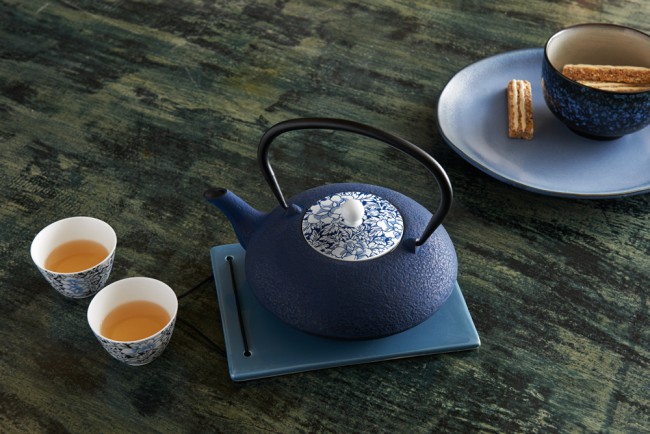
How to Brew White Tea?
To really appreciate the delicate flavours and the dazzling silver buds and leaves, white tea should be made with loose leaves. The tea will be much more flavoursome if the leaves are brewed with filtered water at around 80c. The delicate character of white tea can easily be lost if the leaves are infused with water that is too hot. Because of the fluffy, airy nature of modern white teas, a large heaped teaspoon of leaves should be used per cup. White tea is also suitable for repeat infusing of up to three times. The first infusion should be the shortest of around 90 seconds and can extend up to 2-3 minutes for the final steeping.
- Boil fresh water and leave to cool slightly
- Place your white tea in a tea strainer or infuser
- Pour the freshly cooled hot water over the tea
- Steep the tea for the appropriate amount of time
- Strain the tea
- Sit back, relax and enjoy!Does White Tea Contain Caffeine?
White tea, like green and all other traditional teas, does contain caffeine, although on average less than black tea. It also undergoes the least amount of processing of all the teas. A large number of tea leaves picked are left to oxidise to produce black teas, but with white teas and green teas, the leaves do not oxidise at all. White tea is perfect for those who love delicate flavours as they offer a complex tasting experience.
Benefits of White Tea
All teas contain antioxidants, help to fight free radicals and support the immune system, yet white tea is the most powerful. Because it goes through minimal interference in its production, it loses the least amount of its beneficial properties. White tea is the purest of teas you can drink, and it’s full of polyphenols which act as antioxidants inside the body which fight against free radicals. It has been linked to, and some experts suggest that white tea can help to reverse skin damage caused by diet, stress and sun. Scientists across the globe are also discovering that white tea can help to reduce the risk of heart disease, reduce bad cholesterol, aid weight loss and benefit oral hygiene to name just a few!
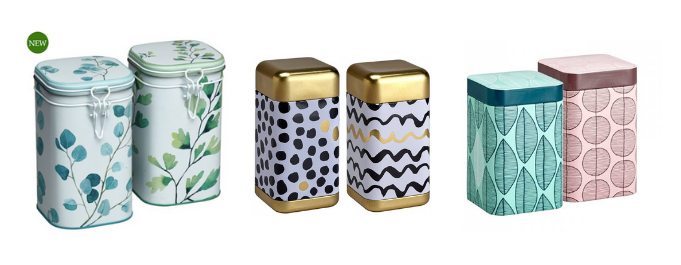
How to Store White Tea
It’s best to store white tea, or any loose-leaf tea, in non-transparent containers such as tea tins or tea caddies. Teas invariably will take on the character of something aromatic, so to prevent any flavour collaboration, unwanted ageing or spoiling, invest in suitable tea containers. A high-quality tea caddy will also protect your tea from moisture and sunlight and will keep it fresher for a lot longer.
We have a brand new range of tea caddies to go with any of our loose leaf teas, and the 'trees', 'black and white' and 'leaf' designs are just three of our favourites!- 3rd April 2019












 EARN POINTS WITH OUR LOYALTY SCHEME
EARN POINTS WITH OUR LOYALTY SCHEME